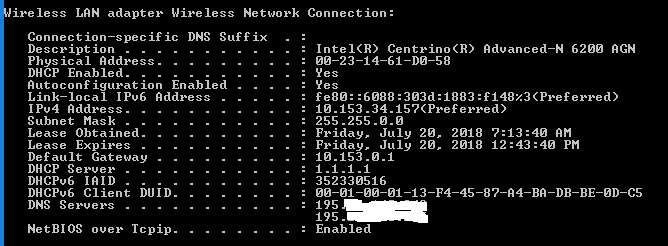

Once the tick box "Allow zone transfers" is ticked, the administrator is able to select which DNS server zone transfers will be allow or they can choose the option "To any server". This is done on the "Zone Transfers" tab. To allow DNS records to be listed using ls in NSLookup, zone transfers needs to be enabled on the computer that is asking for that information. In order to configure the zone transfer properties, right click on the zone and select properties.ĥ. On Microsoft DNS Server, to configure the DNS server to allow DNS records to be listed, run DNS Manager from Administrative Tools or under Tools in Server Manager. When you attempt to query the DNS records, you may get an answer back saying query refused.Ĥ. Most DNS servers will be configured to not allow a list of the DNS records held on that DNS server to be displayed. To list the DNS records for a DNS name, run the command "ls" followed by the DNS name. This is essentially a list of DNS servers that are considered to hold authoritative data for that DNS zone.Ģ. If you enter in a domain name by itself, this will show all the name server records for ITFreeTraining. The mode allows you to run multi commands one after the other.ġ. If you run NSLookup without any parameters, this will launch NSLookup into interactive mode. The results shown for NSLookup are based on where the result came from, not which DNS servers were used in the process. The important point to remember is that even when forwarding is used you can still get an authoritative answer if the DNS server had to contact an authoritative DNS server in order to obtain an answer. When an NSLookup returns a DNS record, it will indicate if this is a non- authoritative result with the text "Non-authoritative answer". For this reason, an administrator should not make a DNS server like this an authoritative DNS server. If the company was a 3rd party company there is no guarantee that this would occur. However, it would be up to the company to make sure this secondary zone was keep up to date. For example, a company, if they had permission to do so, could create a secondary zone from another DNS zone. The point to remember is the administrator for that DNS zone has made a decision that these DNS servers should be considered authoritative or contain up-to-date DNS records. In any DNS zone, there will be DNS records that state which DNS servers are considered to hold authoritative DNS records for that DNS zone. If the DNS server is configured for forwarding, the query will be forwarded to another DNS server, for example the ISP's DNS server and that DNS server will then answer the query from its cache or attempt to resolve it itself. If it is not able to do this it will attempt to resolve the query itself.

When querying a DNS server, a DNS server will first attempt to resolve the request from its cache. If when running the command you have the line "Non-authoritative answer:" in the response, this means the result has been obtained from a DNS server that has either cached the results or has an unauthoritative copy rather than from a DNS server that is consider an authoritative DNS server. To look at the name server records for a particular website, enter in NSLookup followed by the web address. To open NSLookup, open a command prompt from the start menu.Ģ. NSLookup allows you to control which DNS servers you contact and which DNS records are resolved giving you a real world picture of what is happening with DNS on your network.ġ.
#Nslookup mac address results how to#
This video looks at how to use NSLookup in Windows, however it also available in Linux.
#Nslookup mac address results free#
Check out 🤍 or 🤍 for more of our always free training videos. The NSLookup tool is a great tool for troubleshooting DNS problems.


 0 kommentar(er)
0 kommentar(er)
